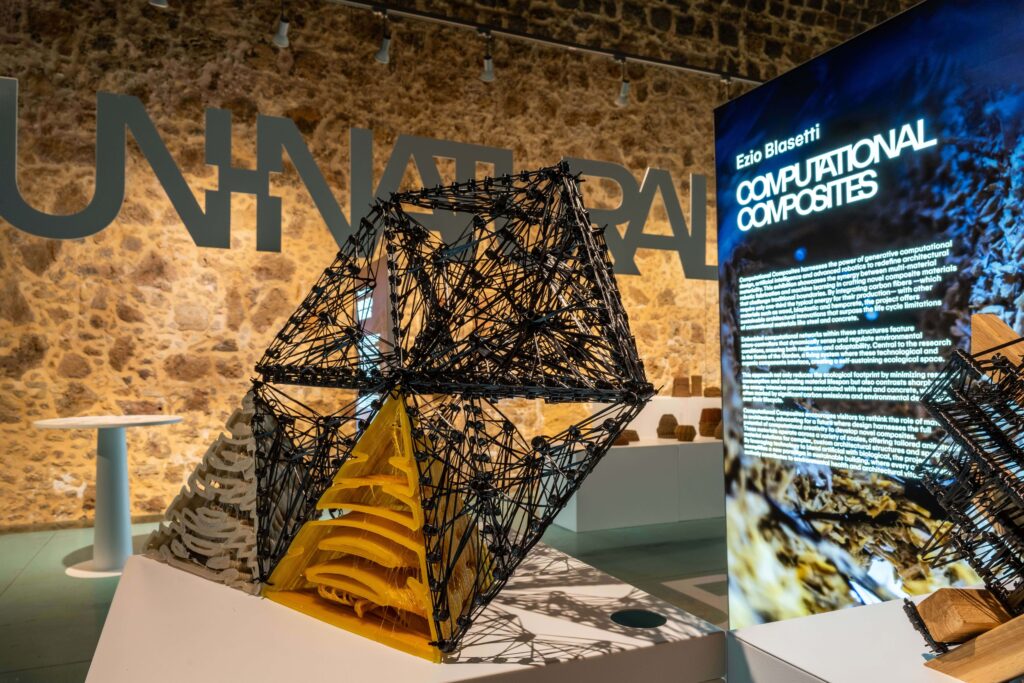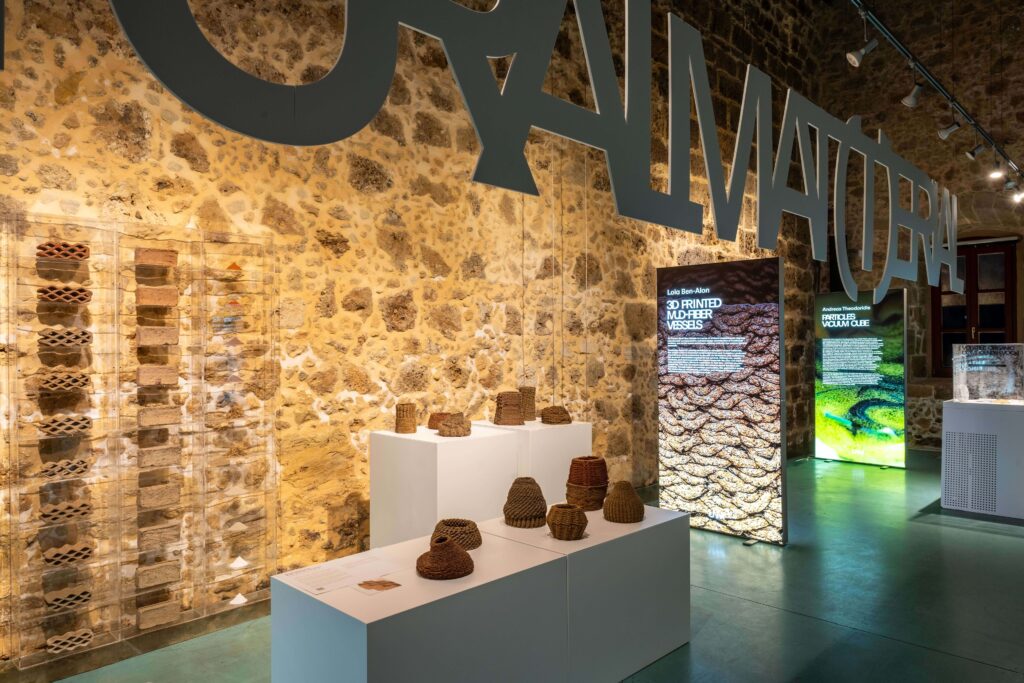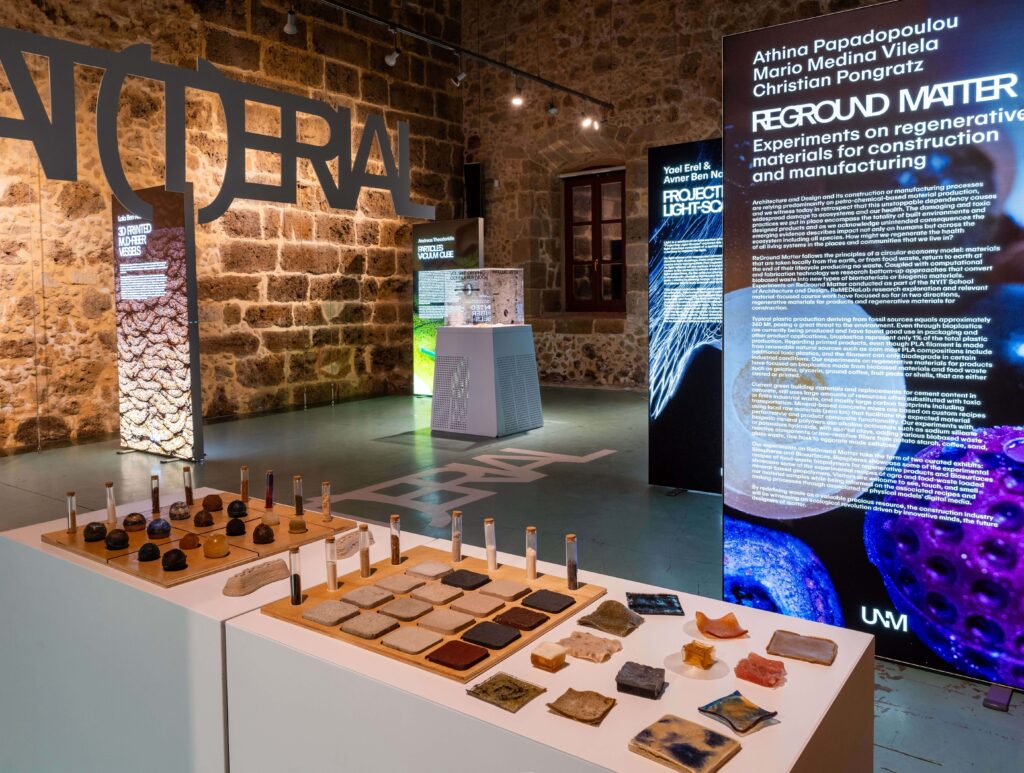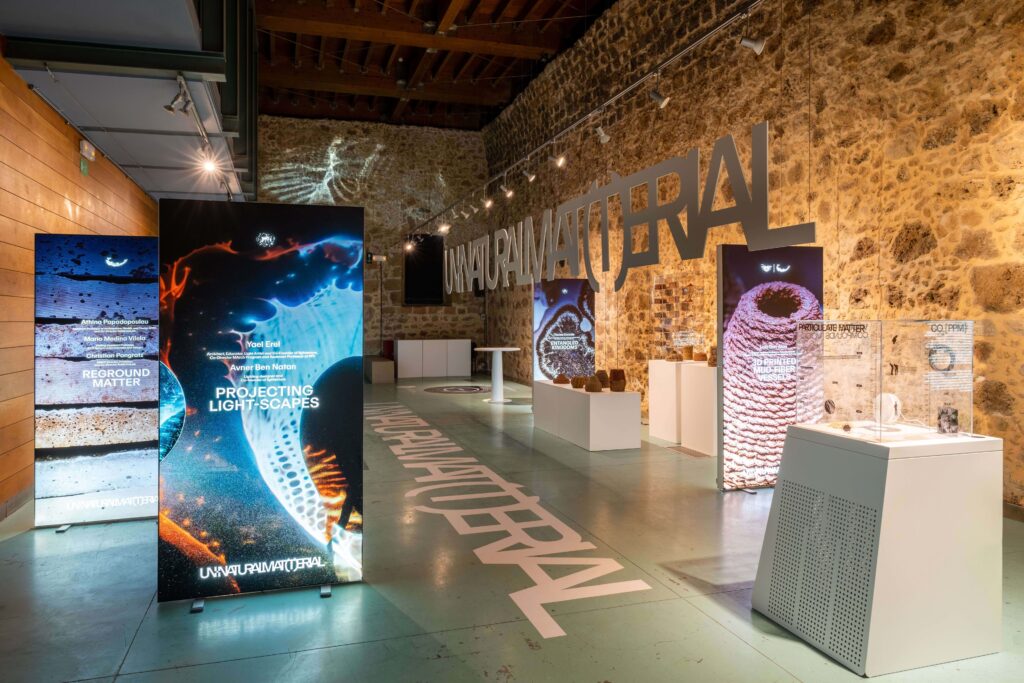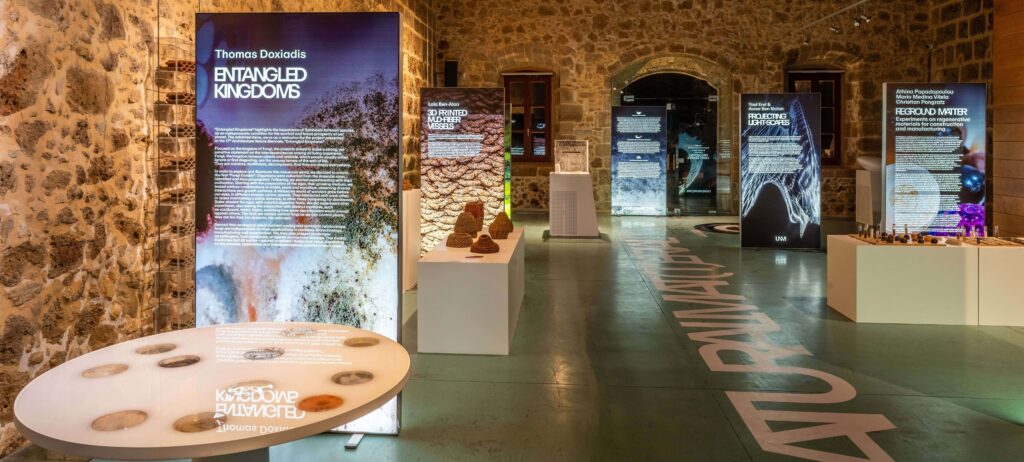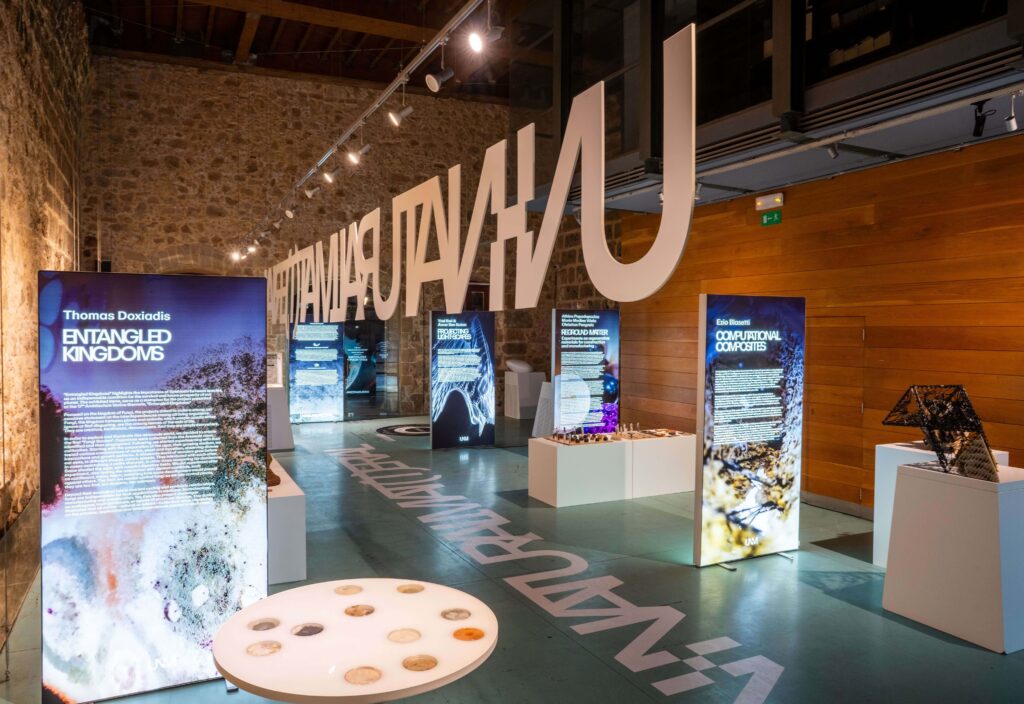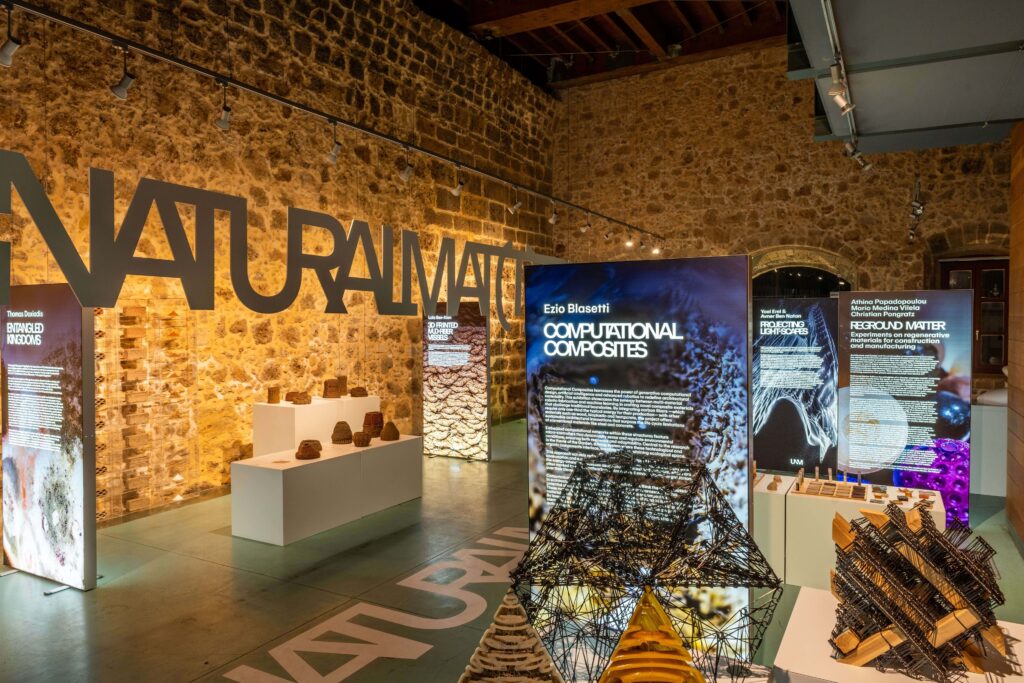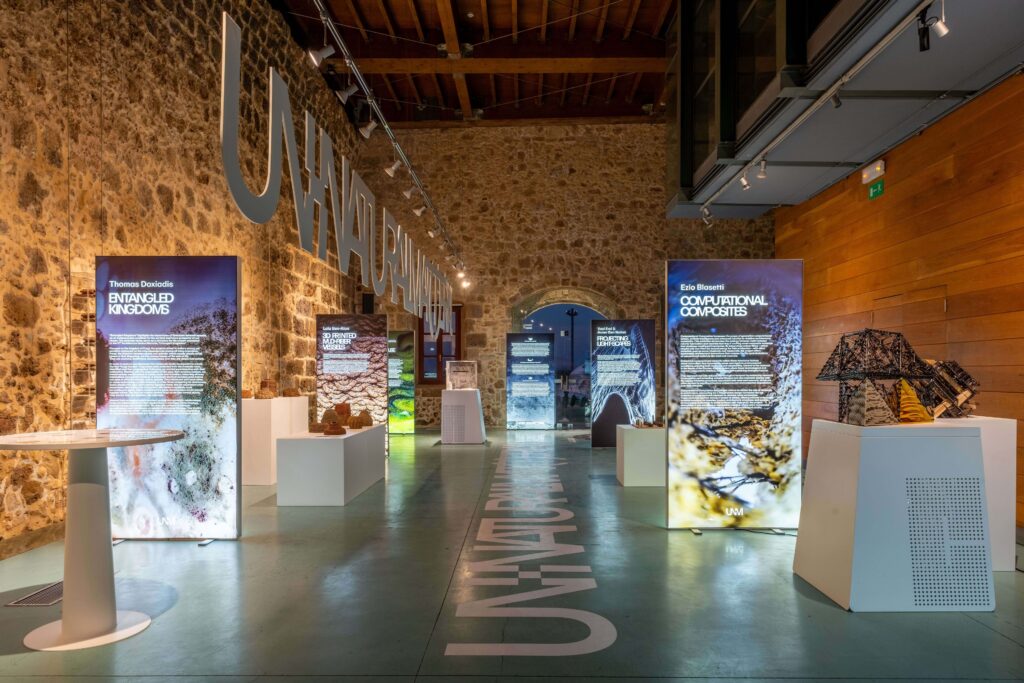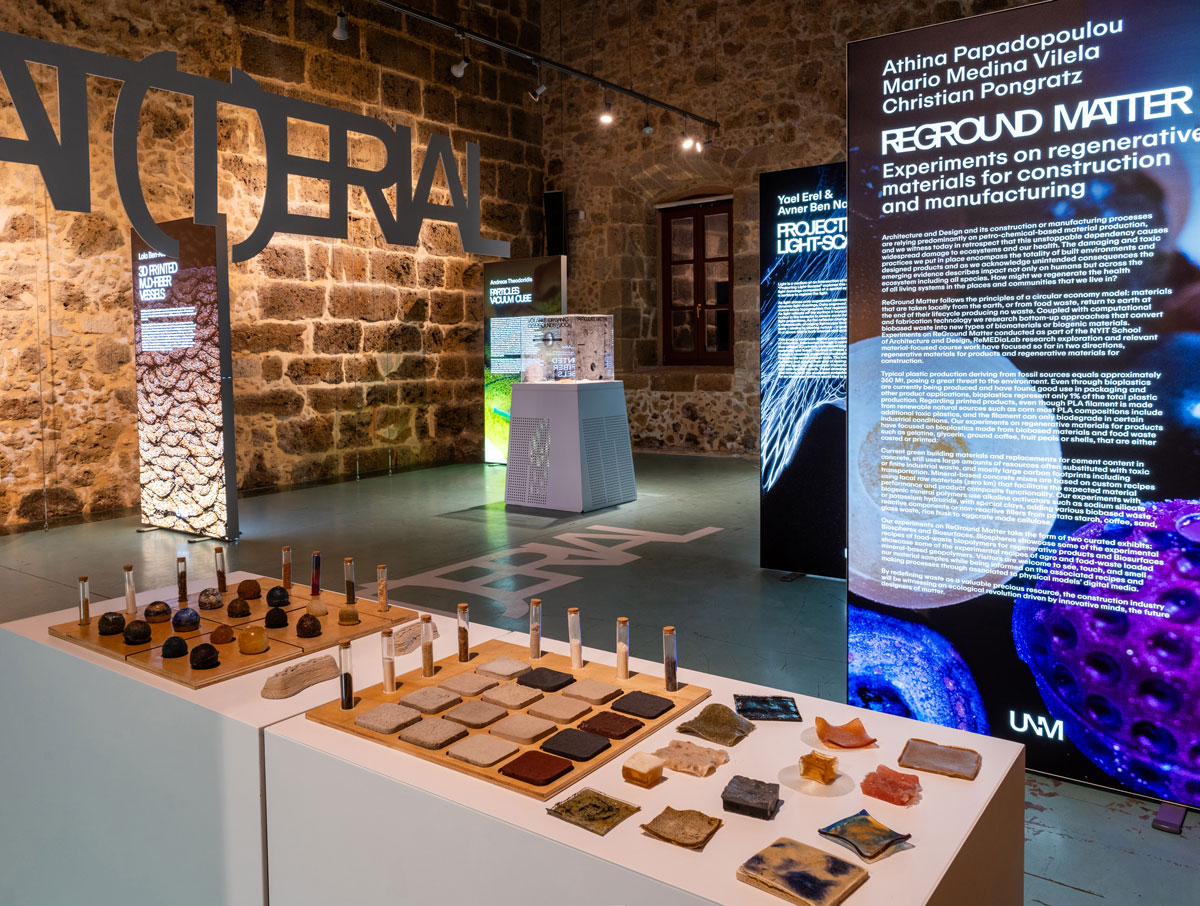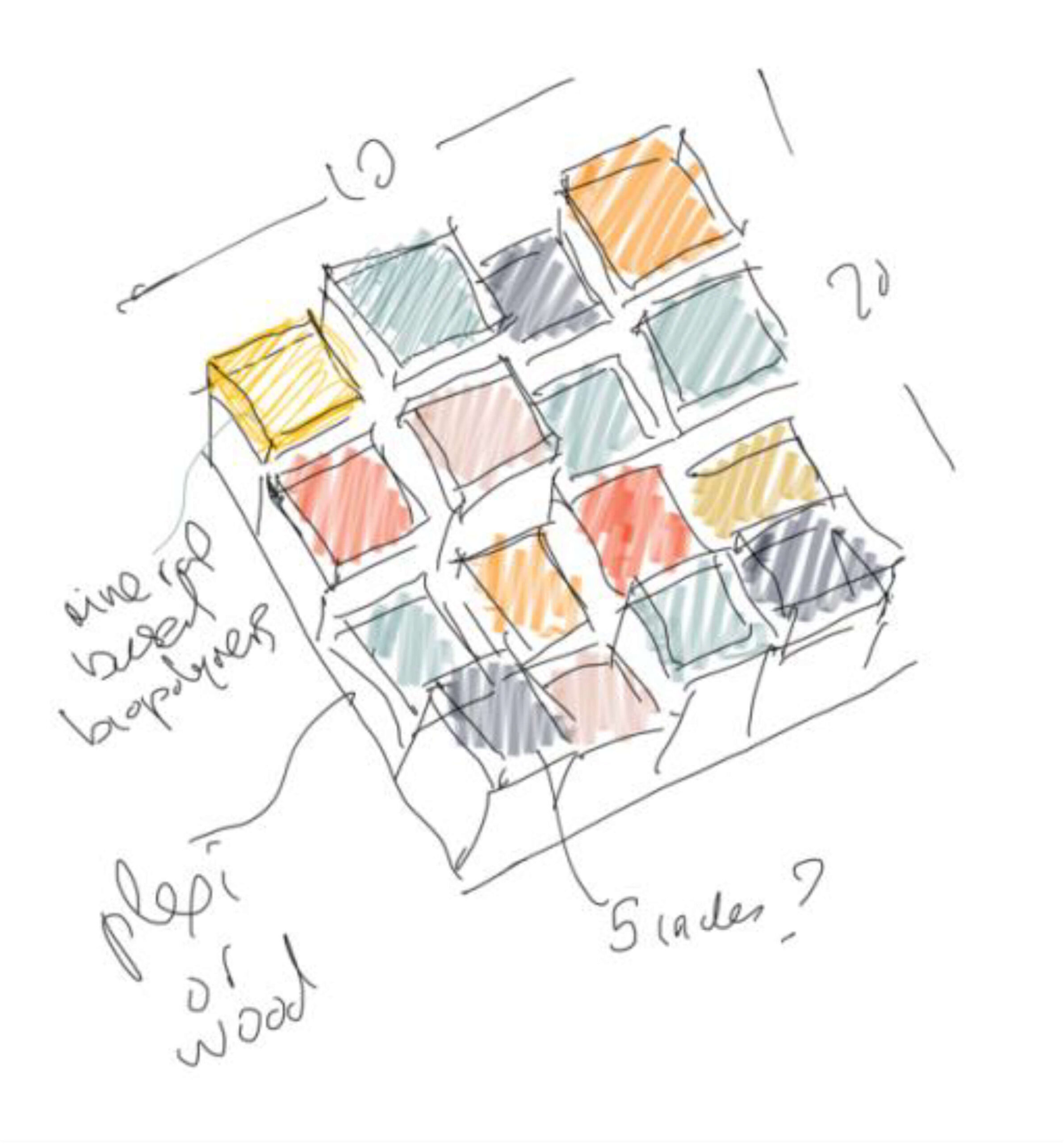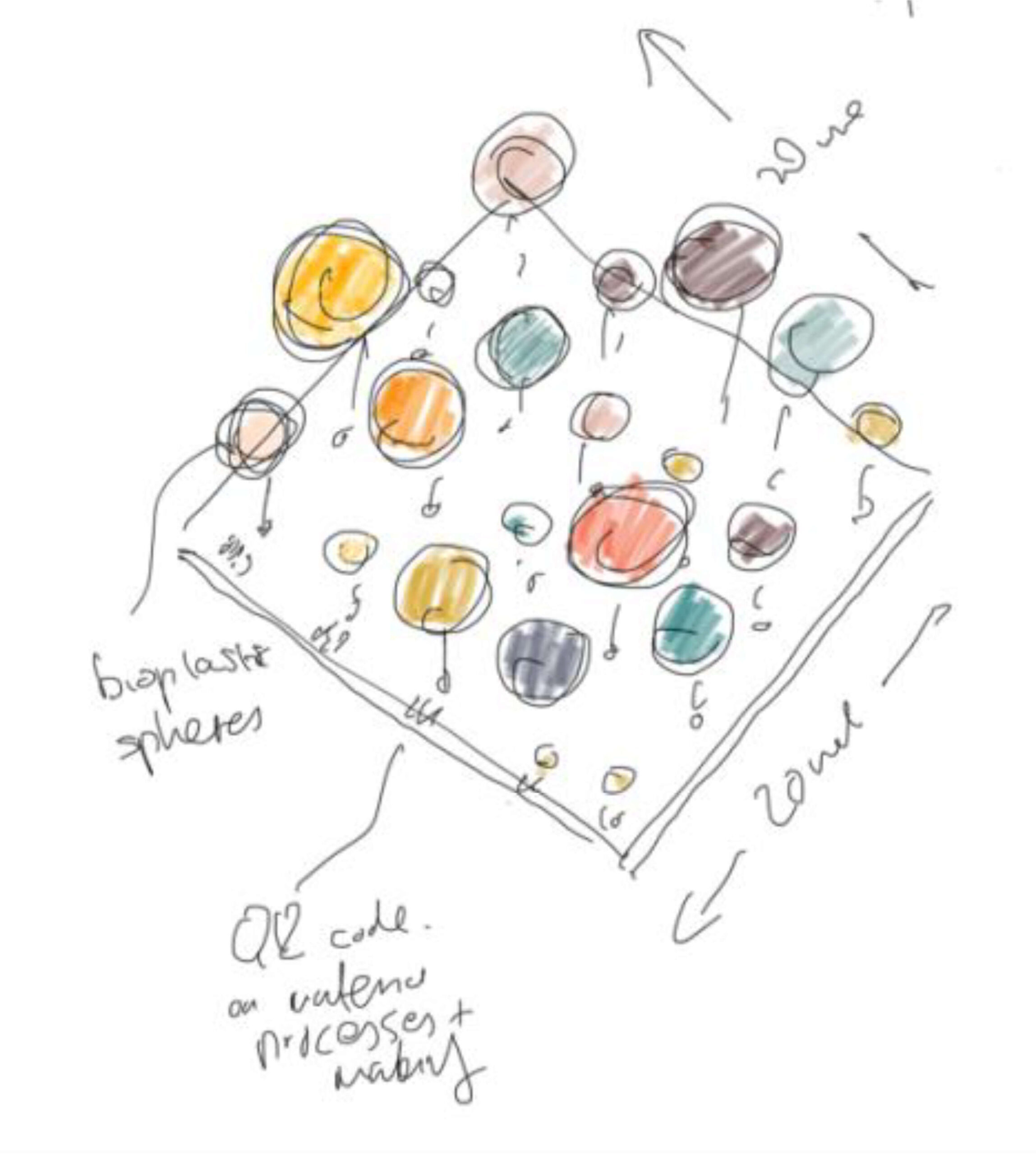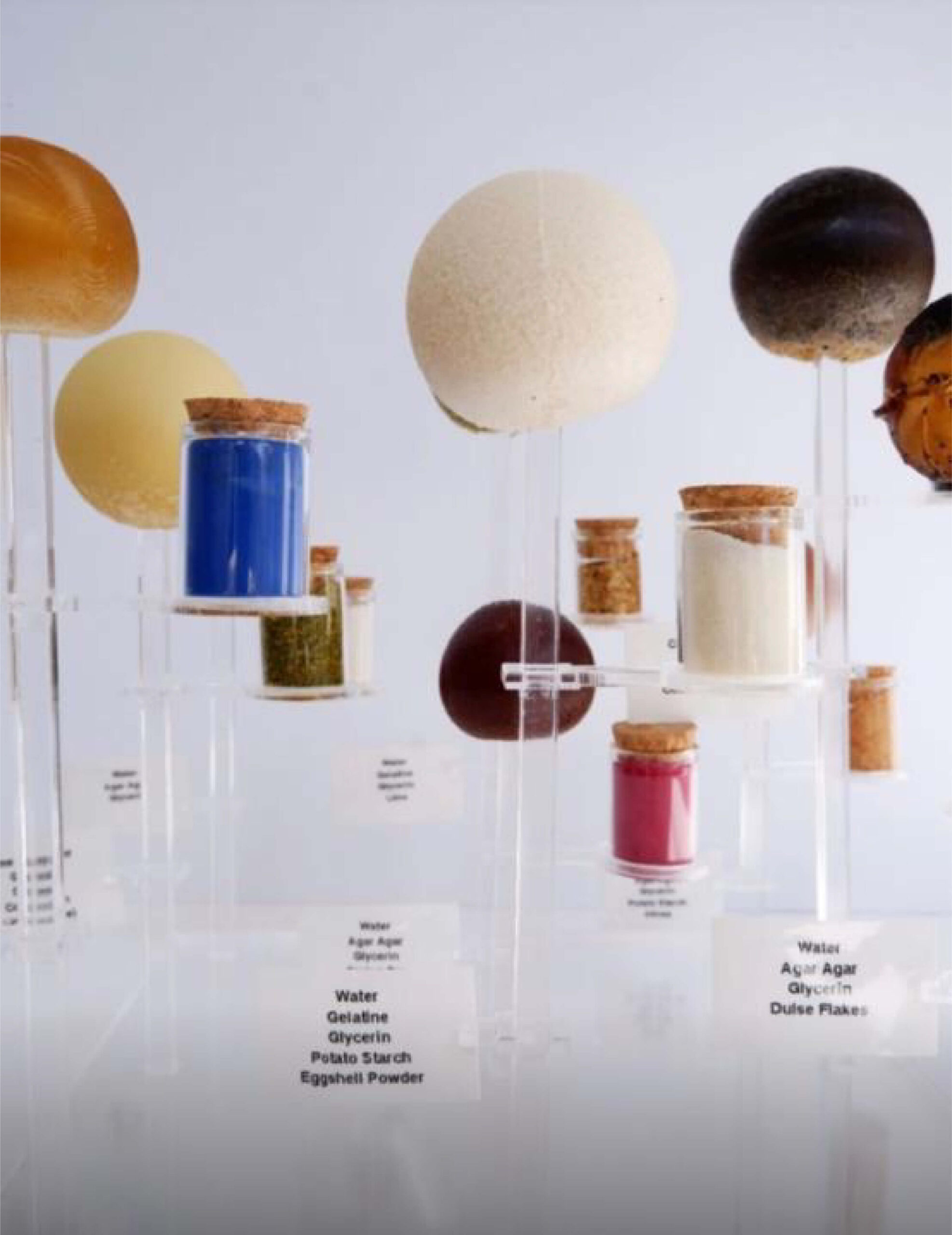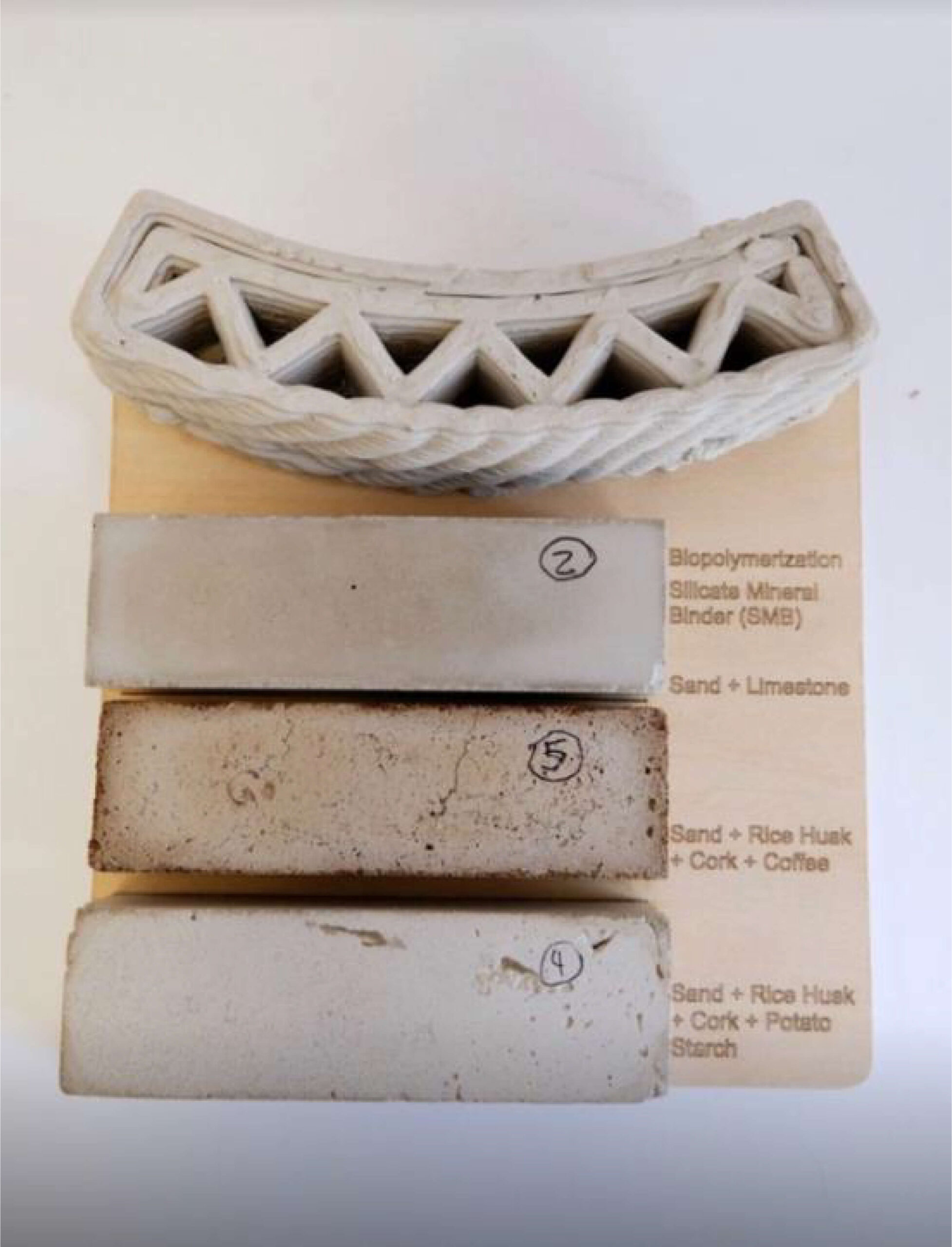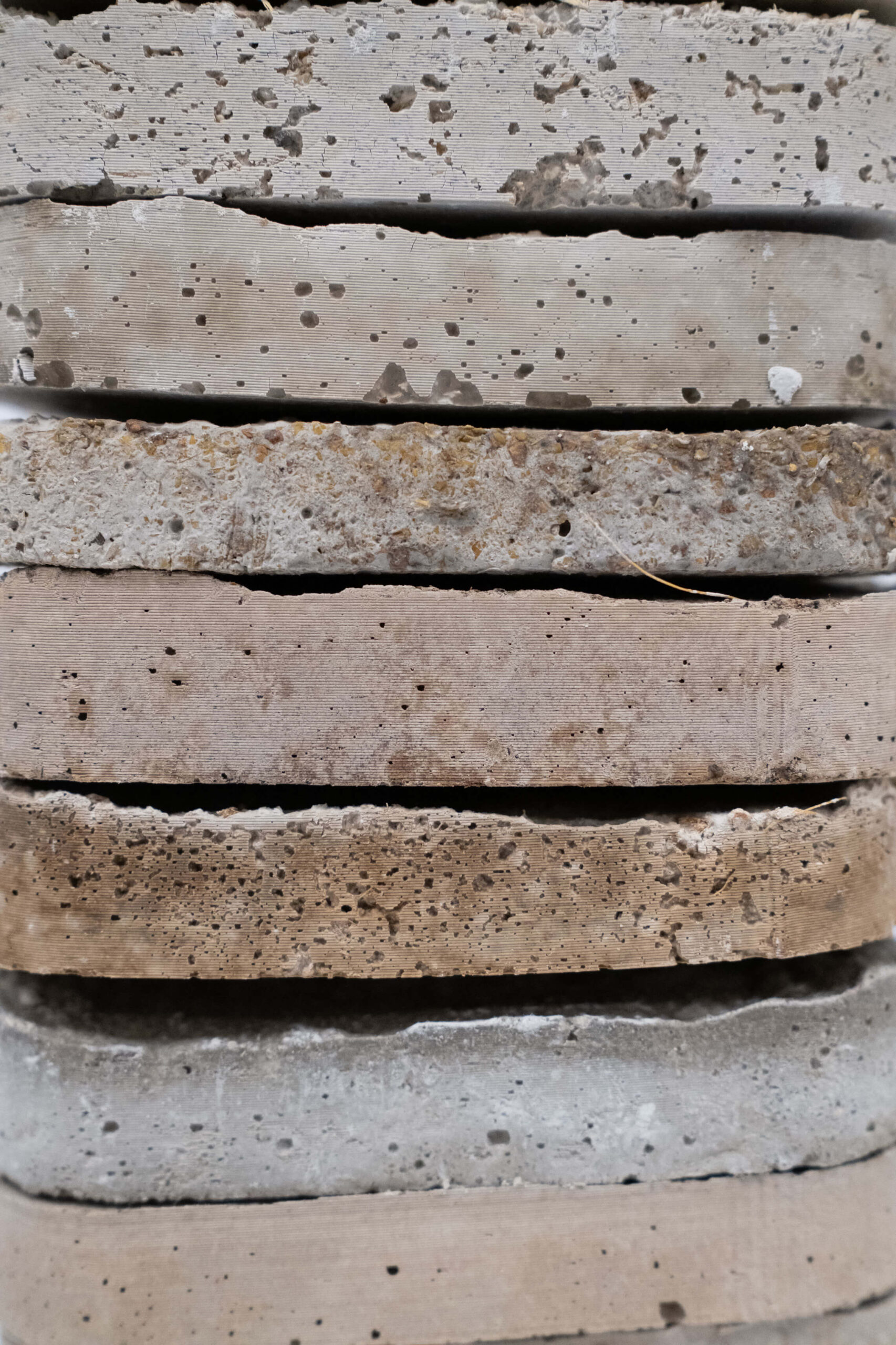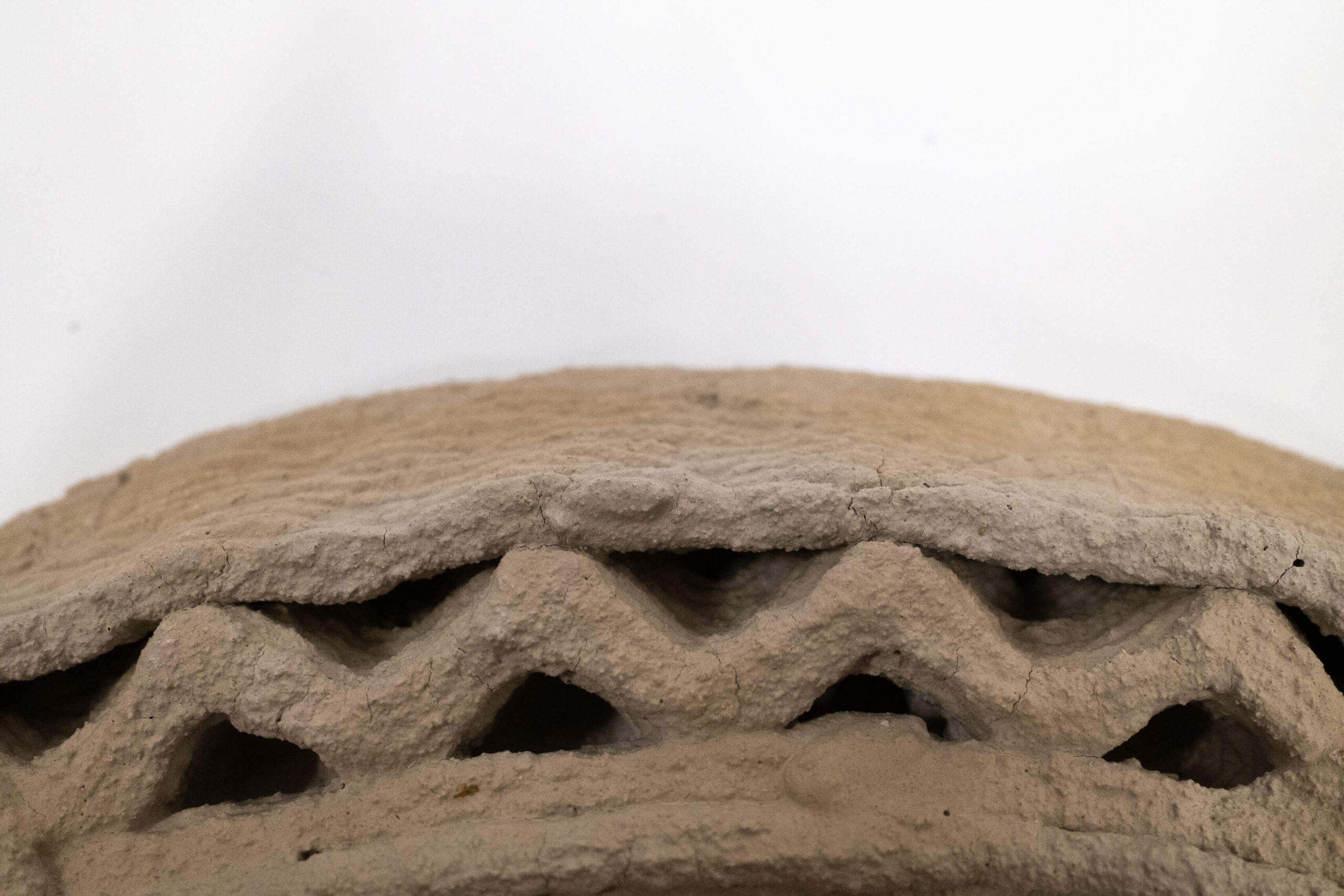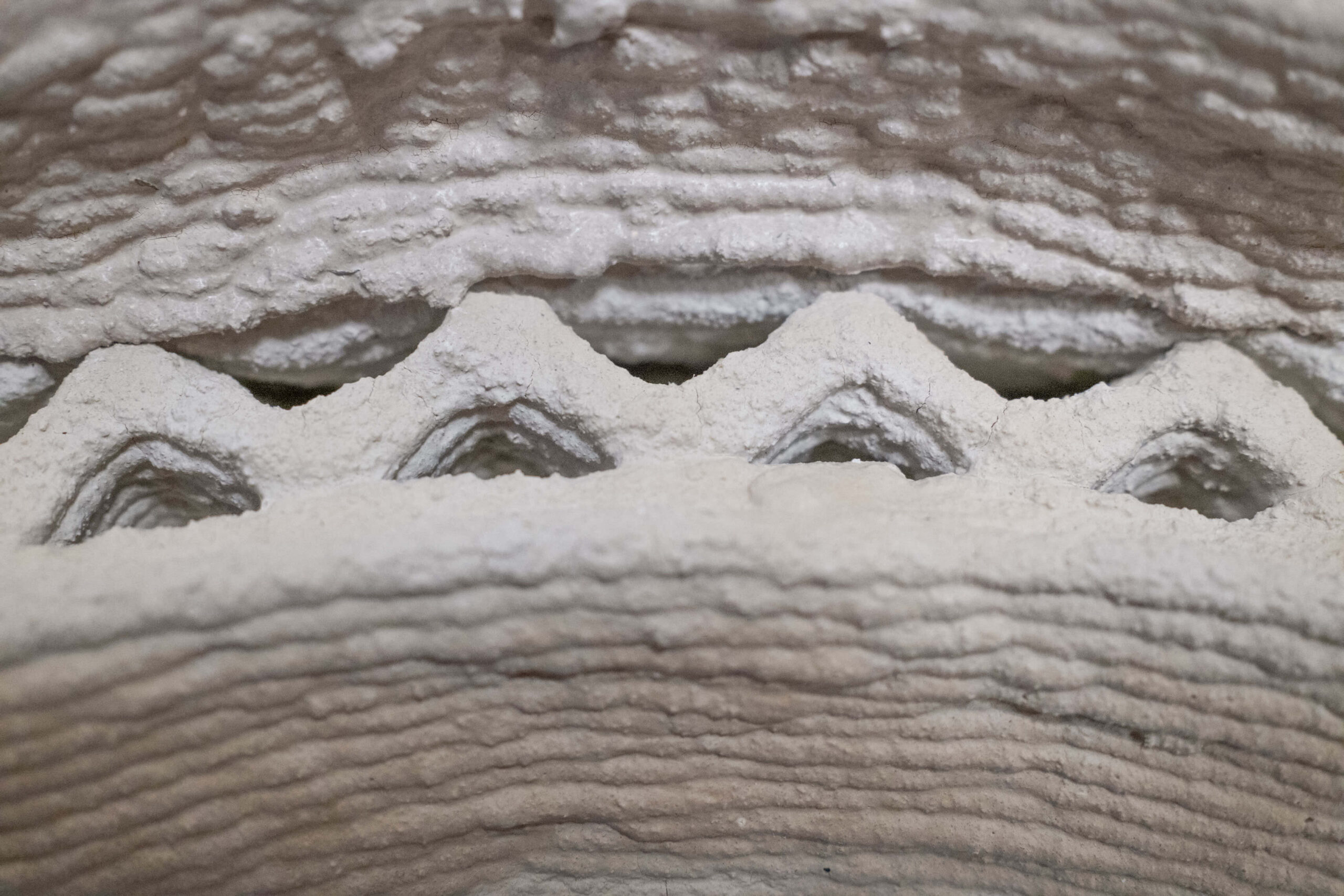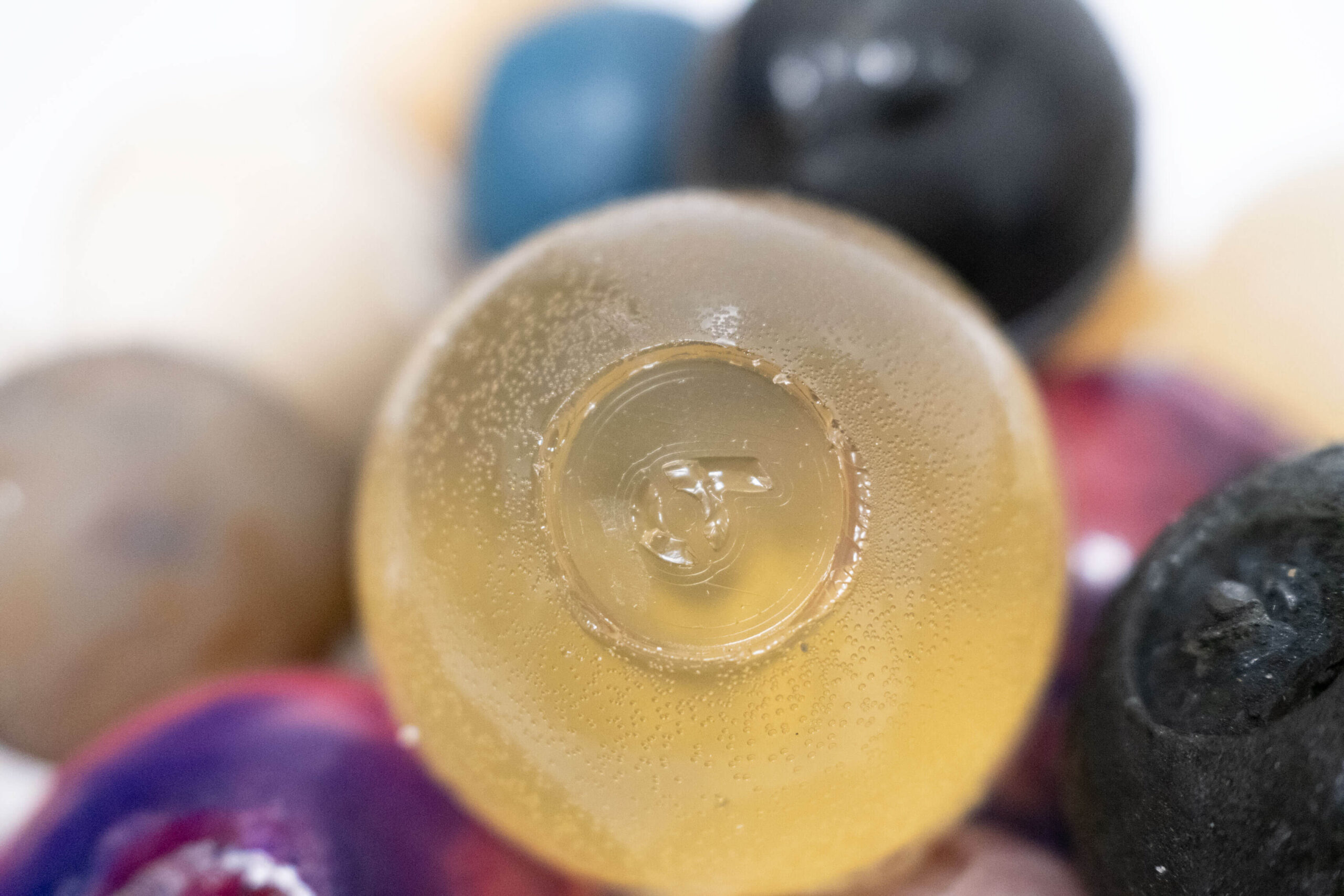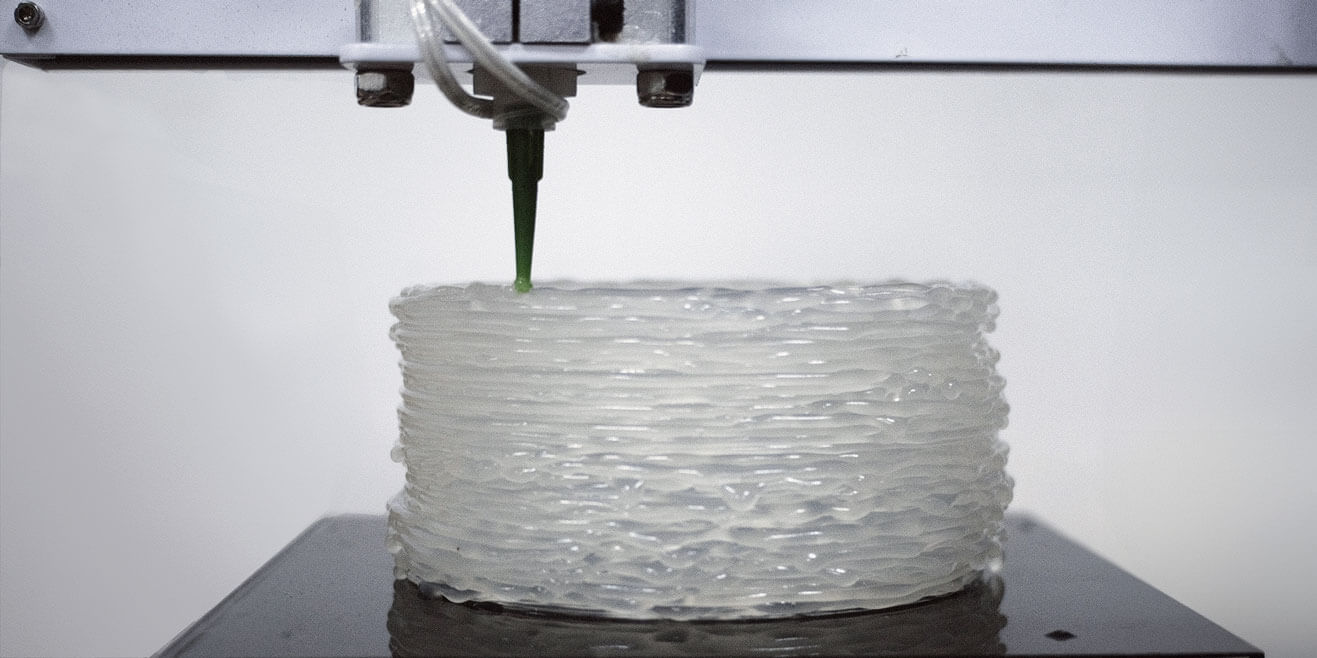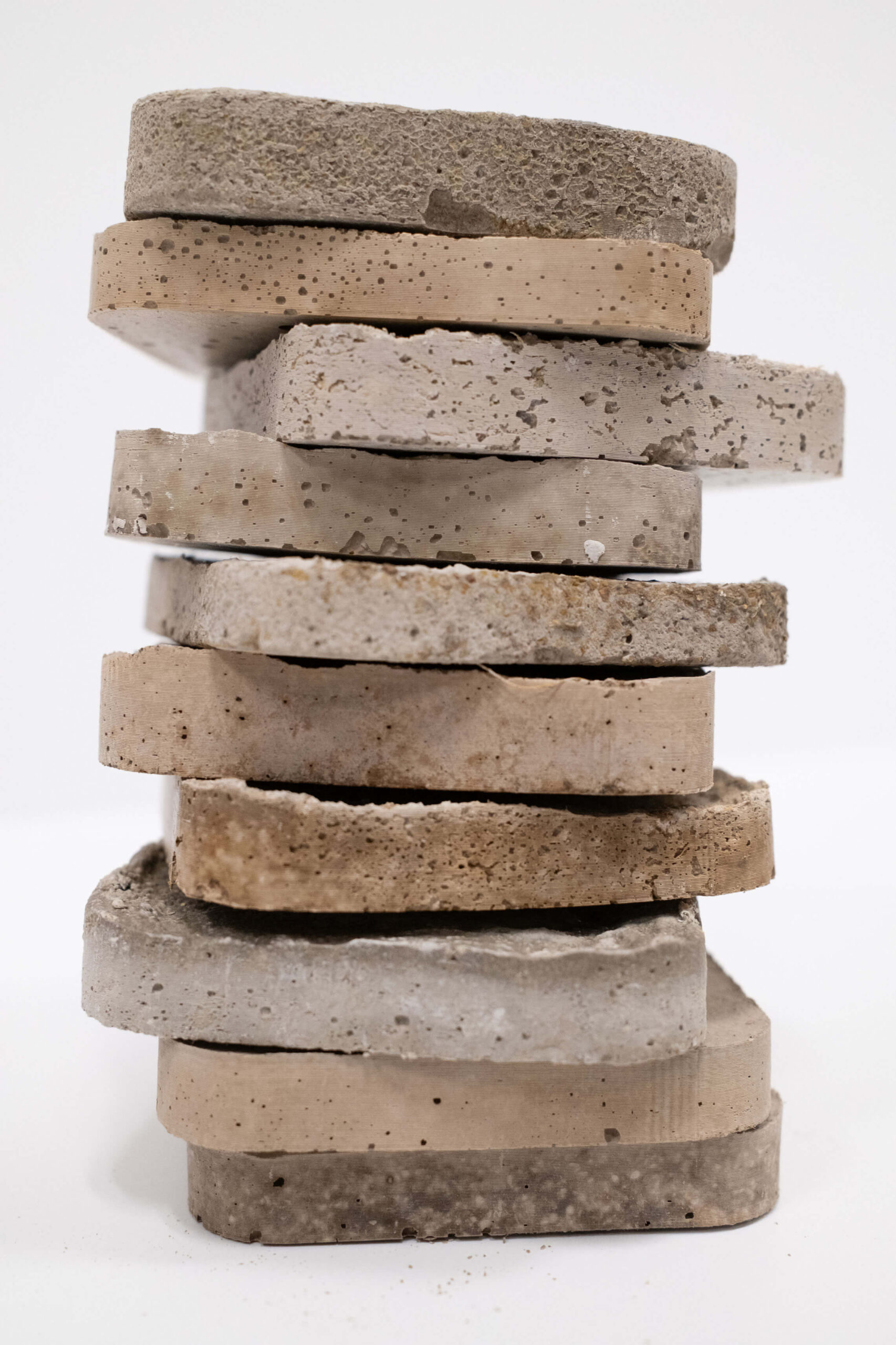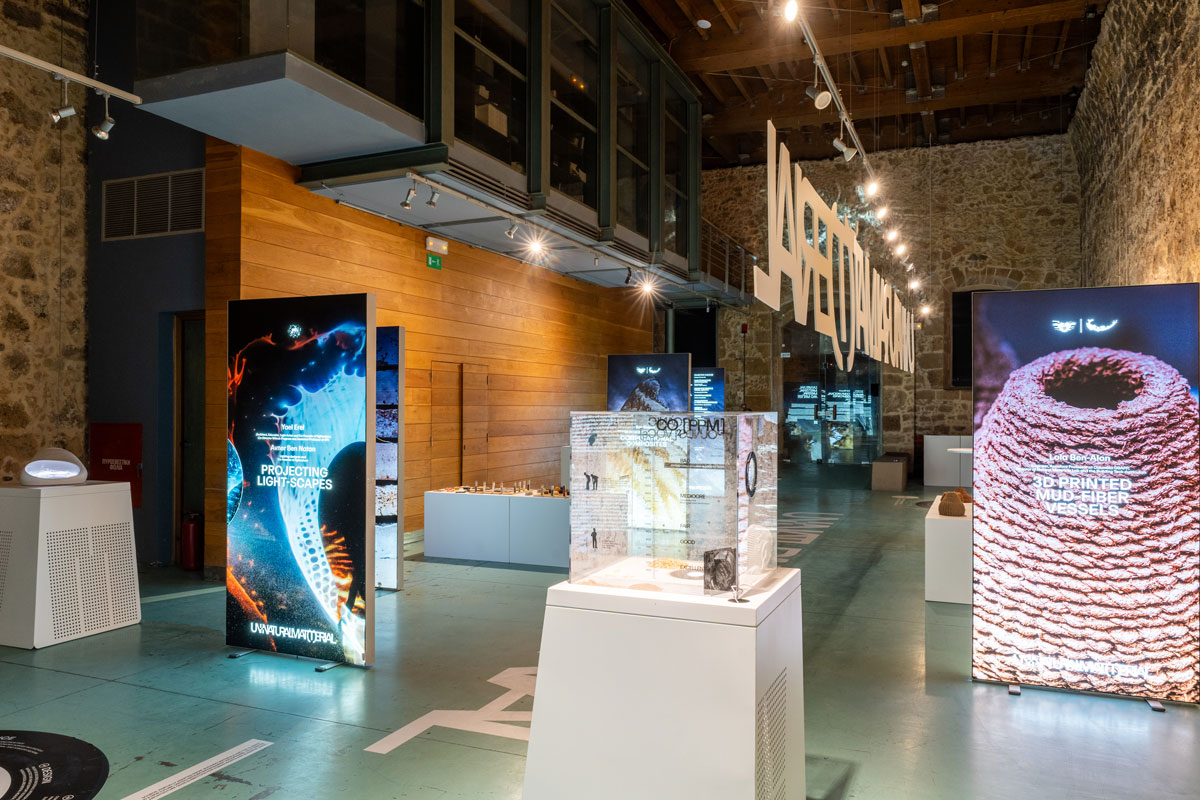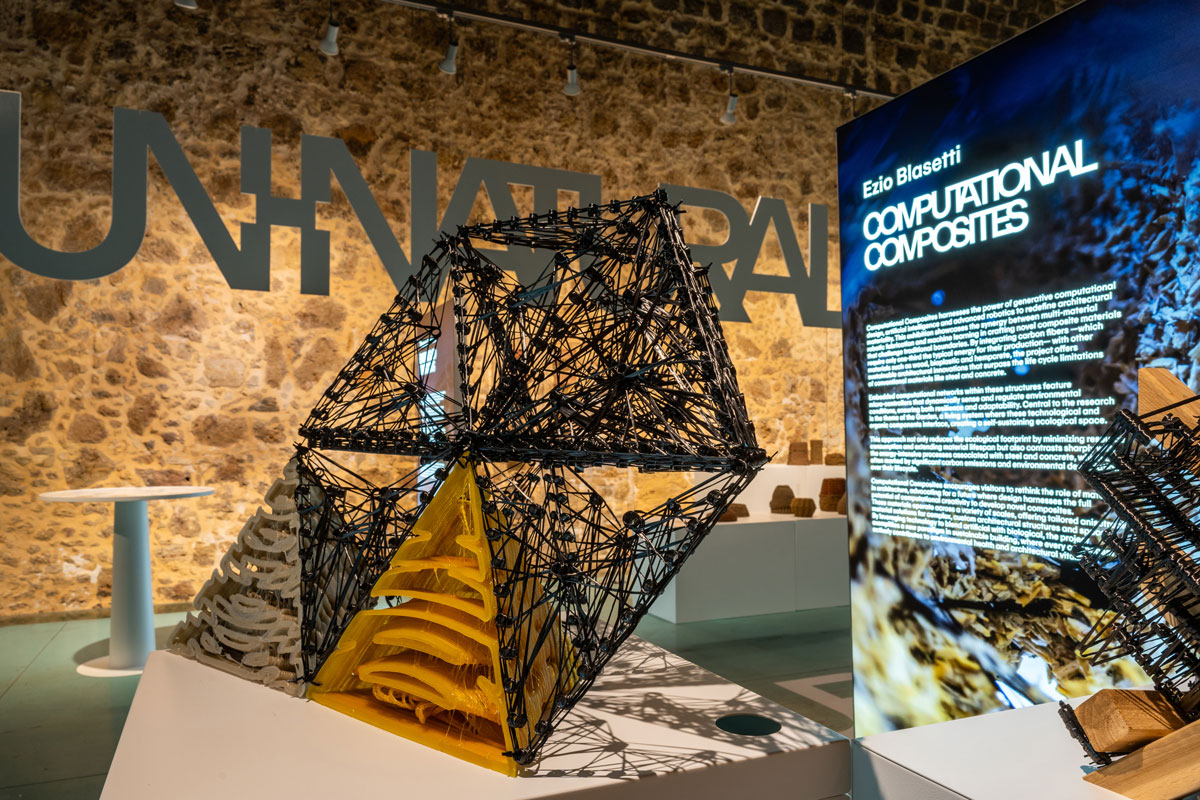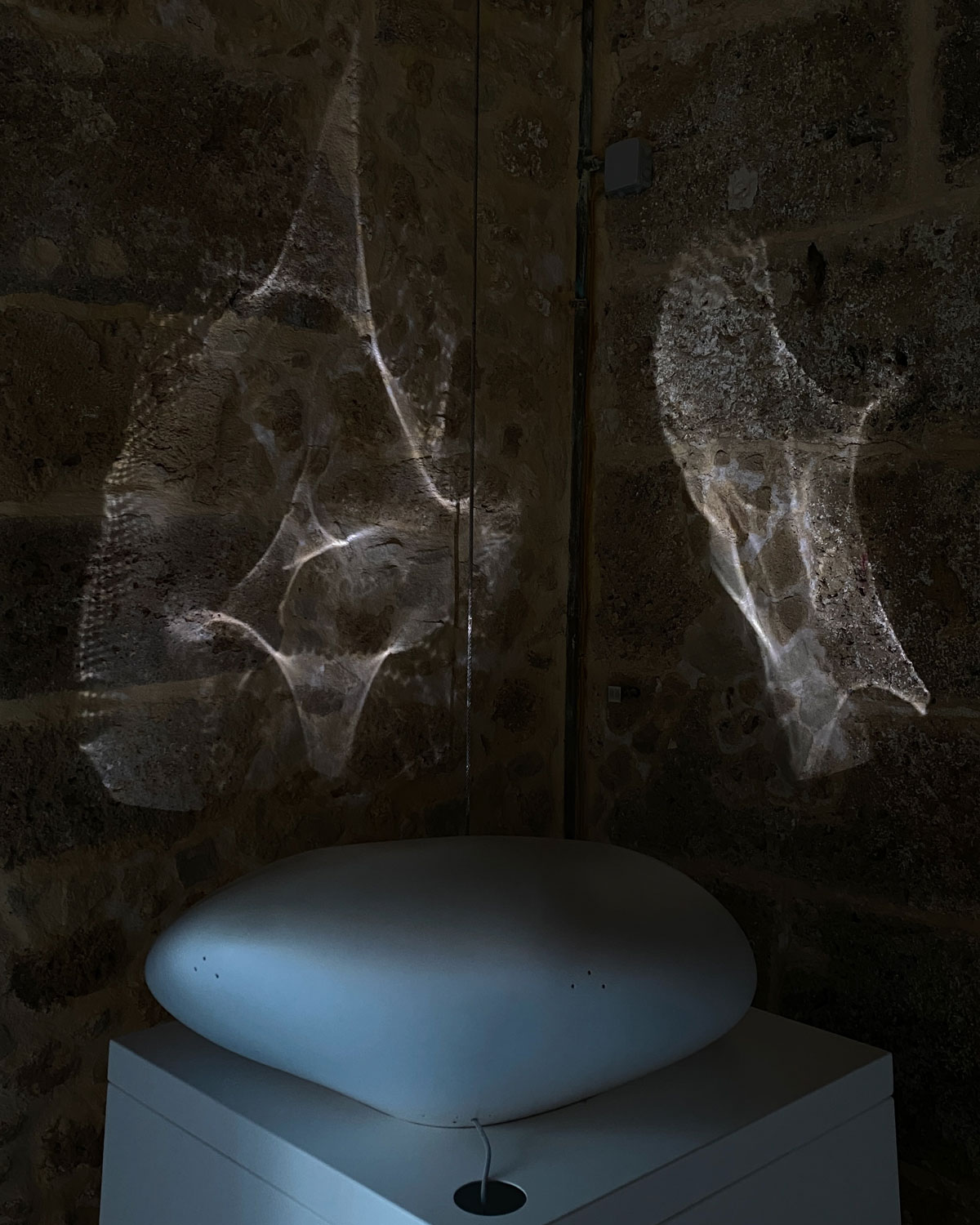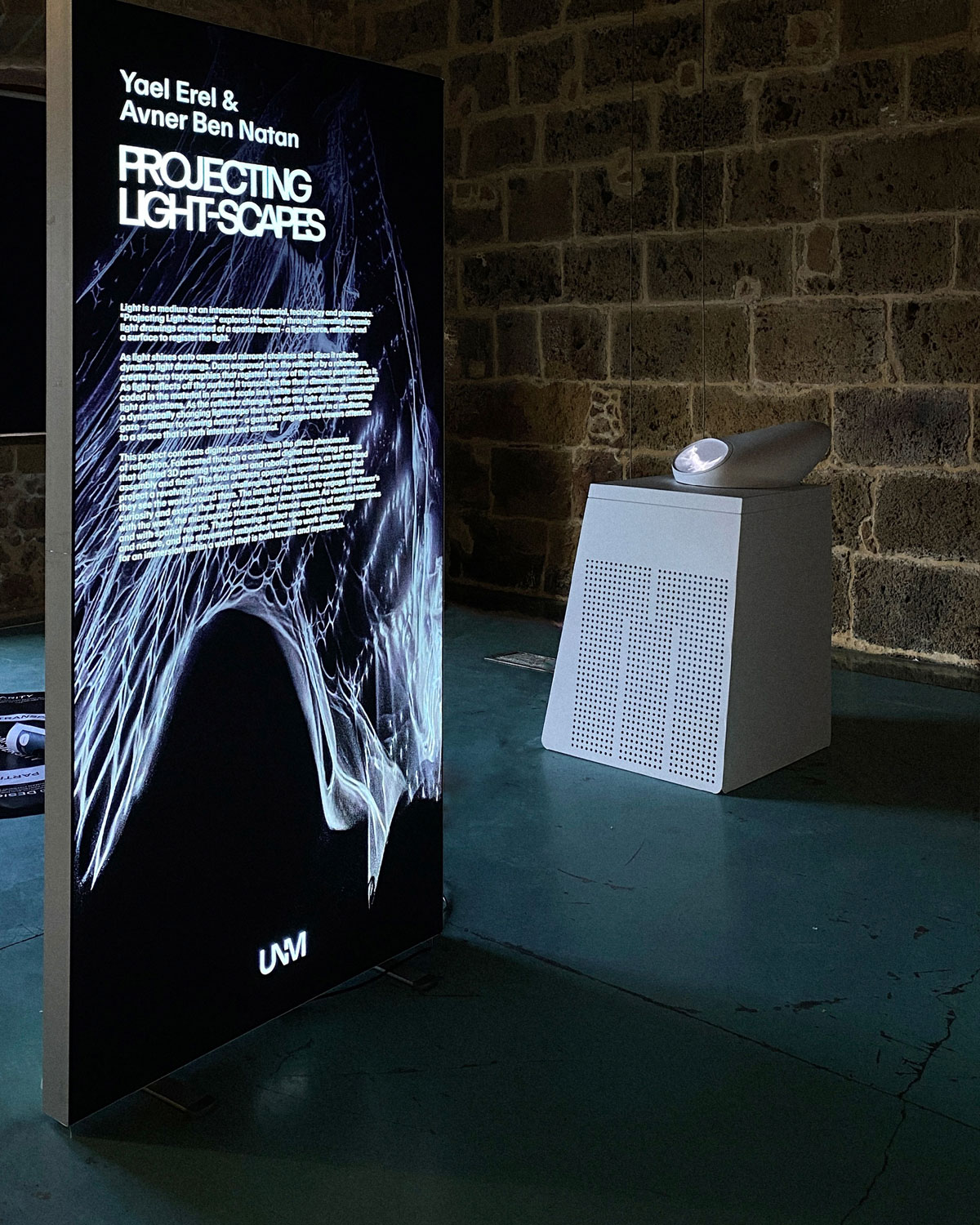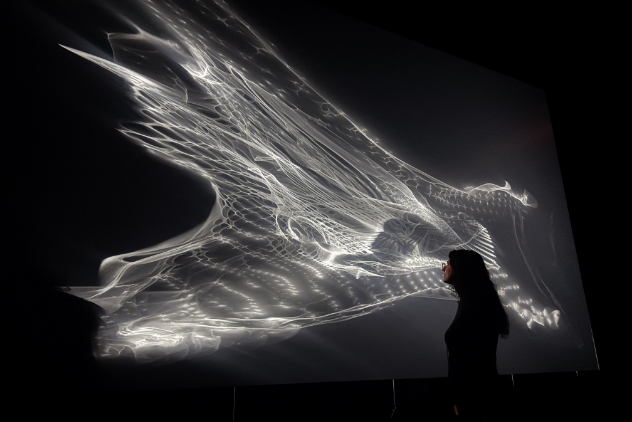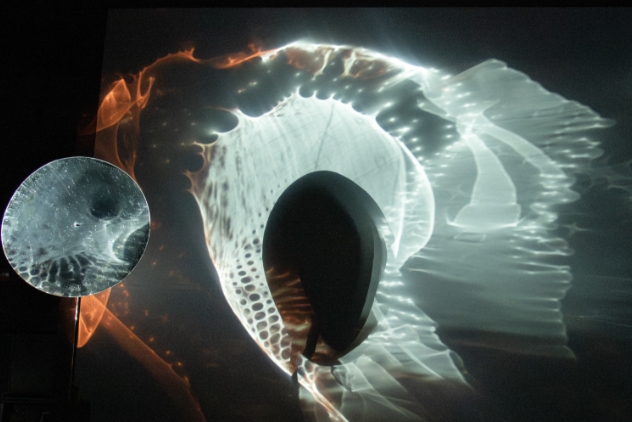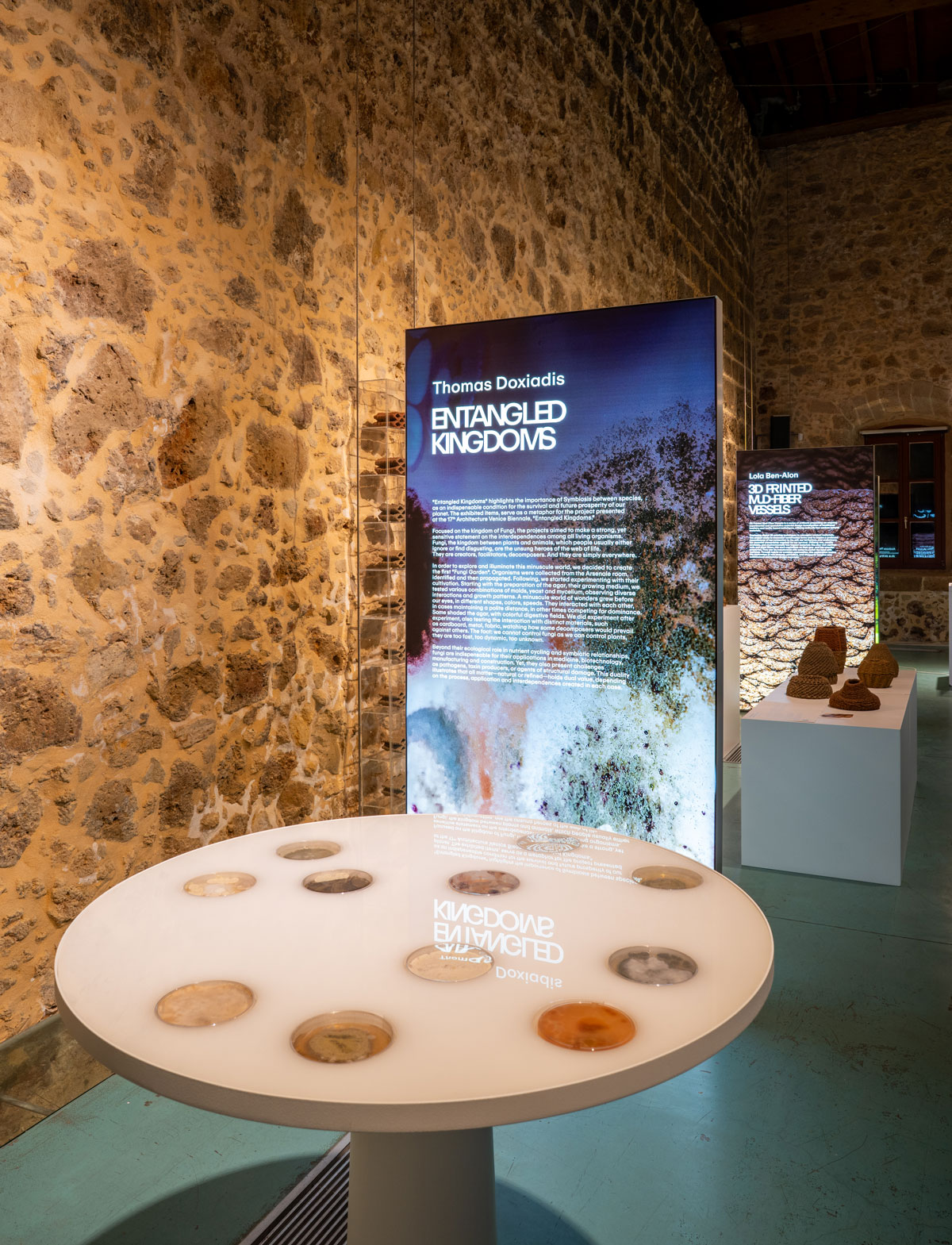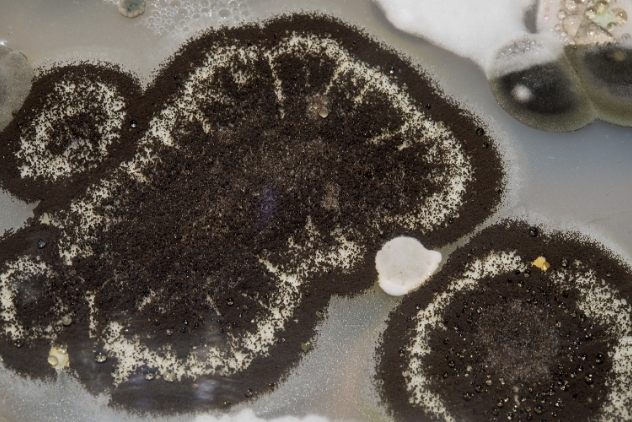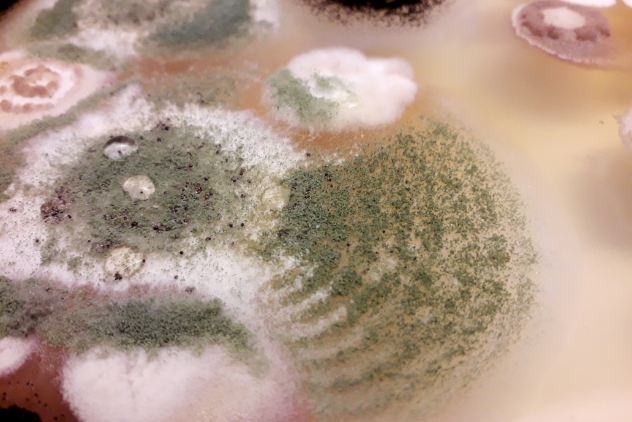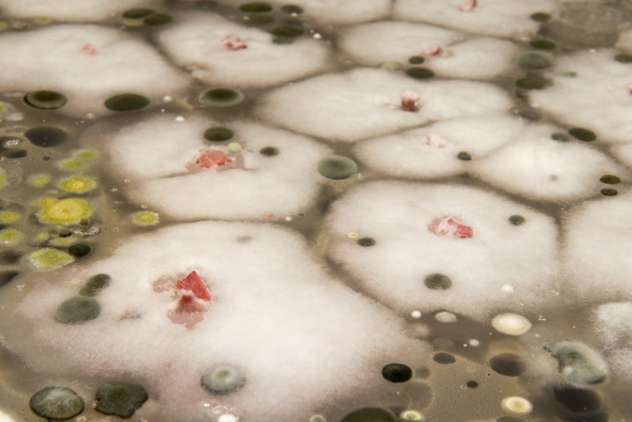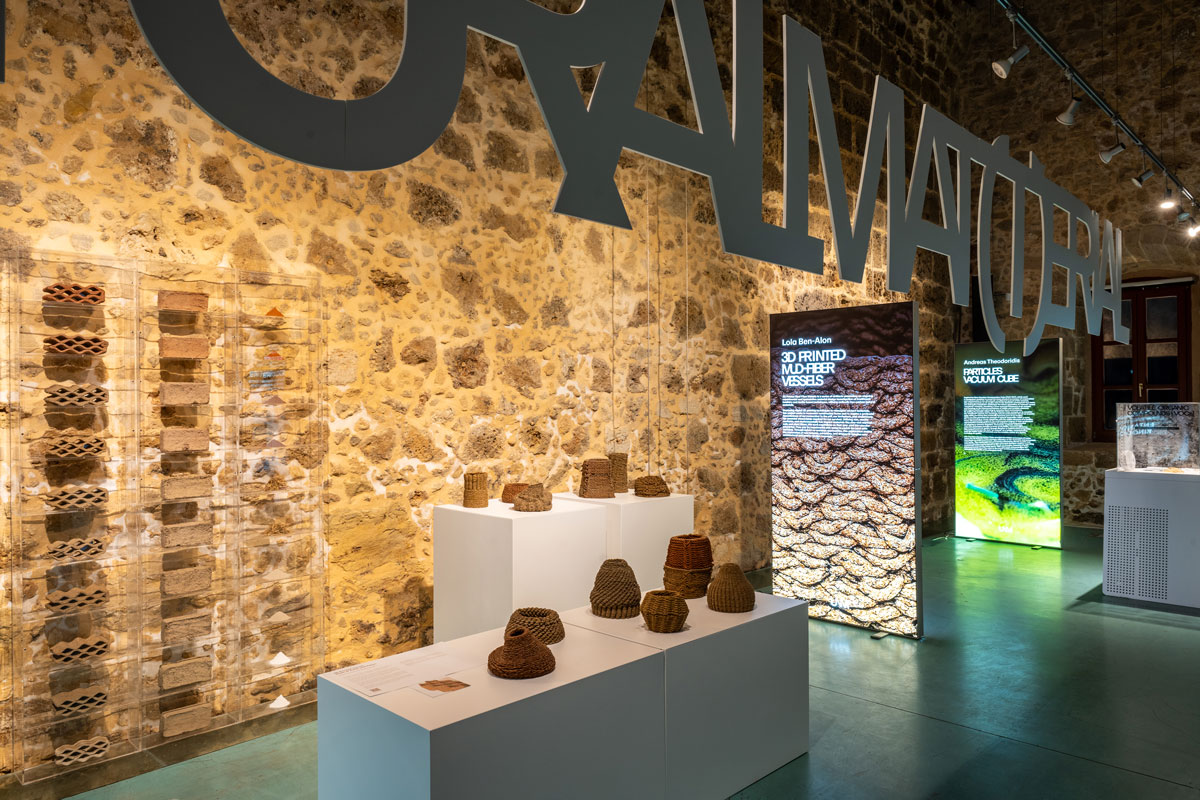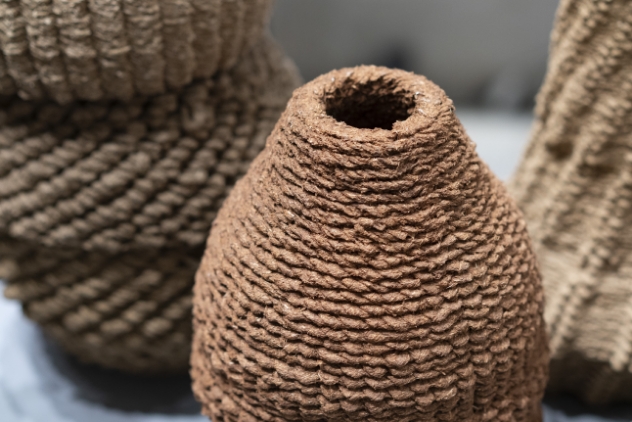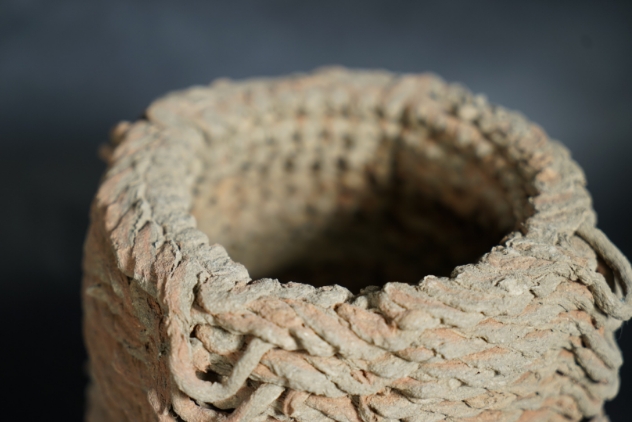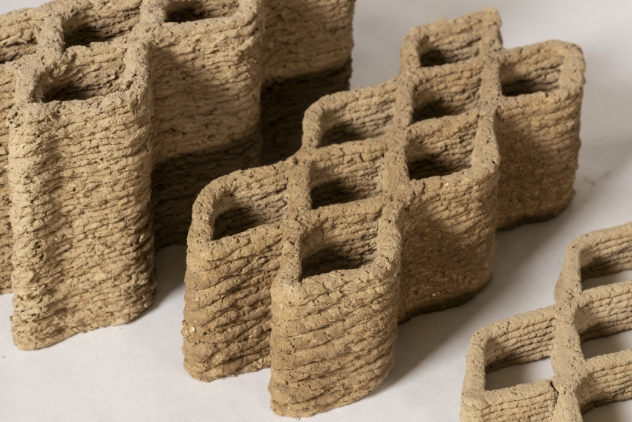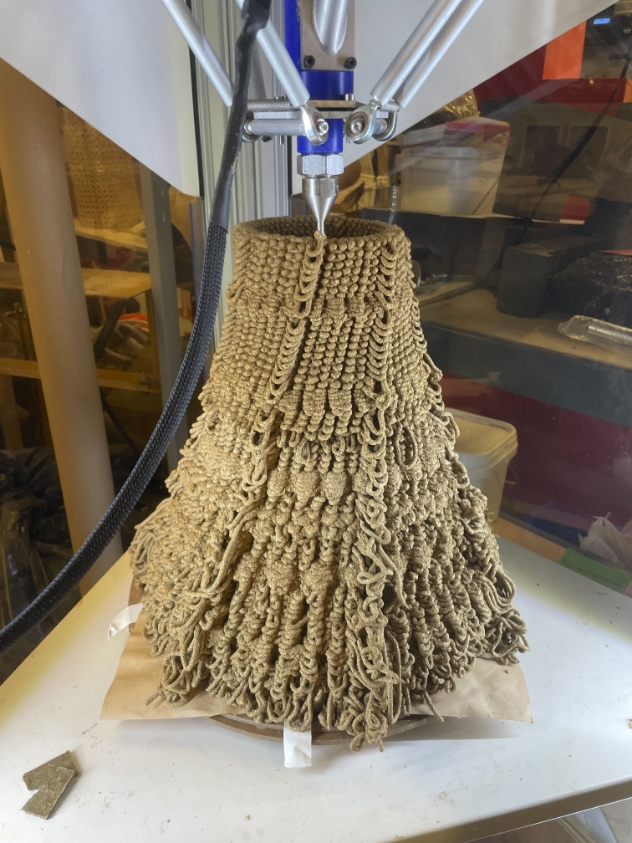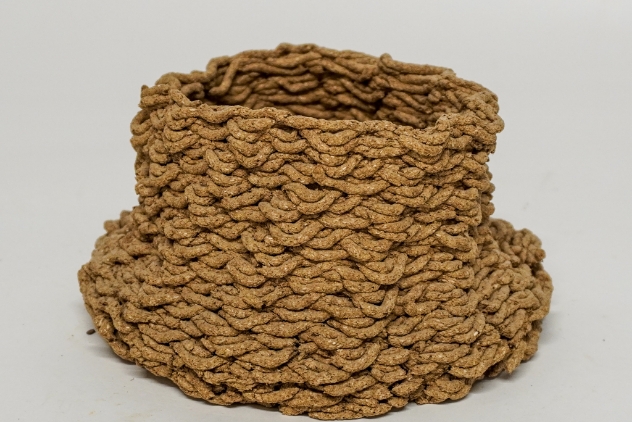Material and matter
About
Un-natural Mat(t)erial challenges conventional views on architecture, matter, and materiality, particularly the notion of what constitutes “natural” materials. Traditionally, materials like timber and stone are deemed natural, while others, such as plastics and composites, are considered unnatural. However, the exhibition questions this dichotomy, highlighting how all materials so far originate from our planet and are, in essence, natural.
Contrary to the term unnatural, the term natural can be misleading, as it often overlooks the complex processes involved in material extraction, manipulation, and disposal and, in oversimplification of a generic positive connotation, does not examine the complex realities of the built environment. Instead, Un-natural Mat(t)erial proposes a more nuanced perspective, where the classification of materials depends on variables such as energy consumption for extraction, embodied energy and carbon, life cycle properties, production and implementation emissions, and other related metrics.
By reviewing these factors, the exhibition prompts visitors to reconsider their understanding of materiality and sustainability in architecture. It challenges preconceived notions and encourages a more holistic approach
to material selection and usage. In doing so, Un-natural Mat(t)erial aims to inspire conversations and actions towards a more environmentally conscious and responsible built environment.
Participants
Lola Ben – Alon
Ezio Blasetti
Thomas Doxiadis
Yael Erel
Avner Ben Natan
Athina Papadopoulou
Mario Medina Vilela
Christian Pongratz
Andreas Theodoridis
Projects
The Basketry projects
The Periodic table materiality projects
The invisible matter projects
ReGround Matter: Experiments on regenerative materials for construction and manufacturing
Particles Vacuum Cube
Computational Composites
Projecting Light-scapes
Entangled Kingdoms
3D Printed Mud-Fiber Vessels
Date
July 2 - July 23, 2025
Cam site
Credits
Participants
Lola Ben-Alon – Columbia GSAPP
Engineer, Assistant Professor at Columbia GSAPP,
Director of Natural Materials Lab and the BuildingTech curriculum
Ezio Blasetti – UPenn
Architect, Senior Lecturer University of Pennsylvania, MsAAD Columbia University, Co-Founded maeta design, Founder of algorithmicdesign.net
Thomas Doxiadis – Doxiadis+
Architect, Landscape Architect ASLA B.A. MArch,MLA Harvard University
Yael Erel
Architect, Educator, Light Artist and Co-Founder of lightexture, Co-Director of
the MArch Program and Assistant Professor at Rensselaer Polytechnic Institute
Avner Ben Natan
Lighting designer and Co-Founder of lightexture
Athina Papadopoulou – NYIT
Assistant Professor of Architecture, Health,and Design NYIT,
and Co-Director ReMEDiaLab
Mario Medina Vilela
Visiting Assistant Professor, NYIT Schoolof Architecture and Design
Christian Pongratz
MSHD Director, Professor,
and Co-Director ReMEDiaLab
Andreas Theodoridis
Assistant Professor NYIT & Practicing Architect-Engineer,
Environmental Technologist
Opening Panel Discussion Moderator
Lydia Kallipoliti
Associate Professor and Director of the M.S.Advanced Architectural Design, Columbia University GSAPP
Exhibition Curator
Andreas Theodoridis
Assistant Professor NYIT & Practicing Architect-Engineer,
Environmental Technologist
CAM Production Coordinator
Penny Chorafa
Architect – Engineer MSarch
Exhibition Design & Visual Identity
Post-Spectacular Office
Pedestals Design
Andreas Theodoridis
Assistant Professor NYIT & Practicing Architect-Engineer,
Environmental Technologist
Photography & Video Documentation
Petros Pattakos – Cimelio Team
Website Development
Marios Karampoulas – Net22
CAM Advisory Board
Lefteris Vergerakis
Valina Geropanta
Andreas Theodoridis
Giorgos Kalligeris
Zacharias Pistopoulos
Dimitris Tsakalakis
Media Partner
Archisearch
Production sponsors
Design Ambassador
VETA – More than a metal manufacturer
